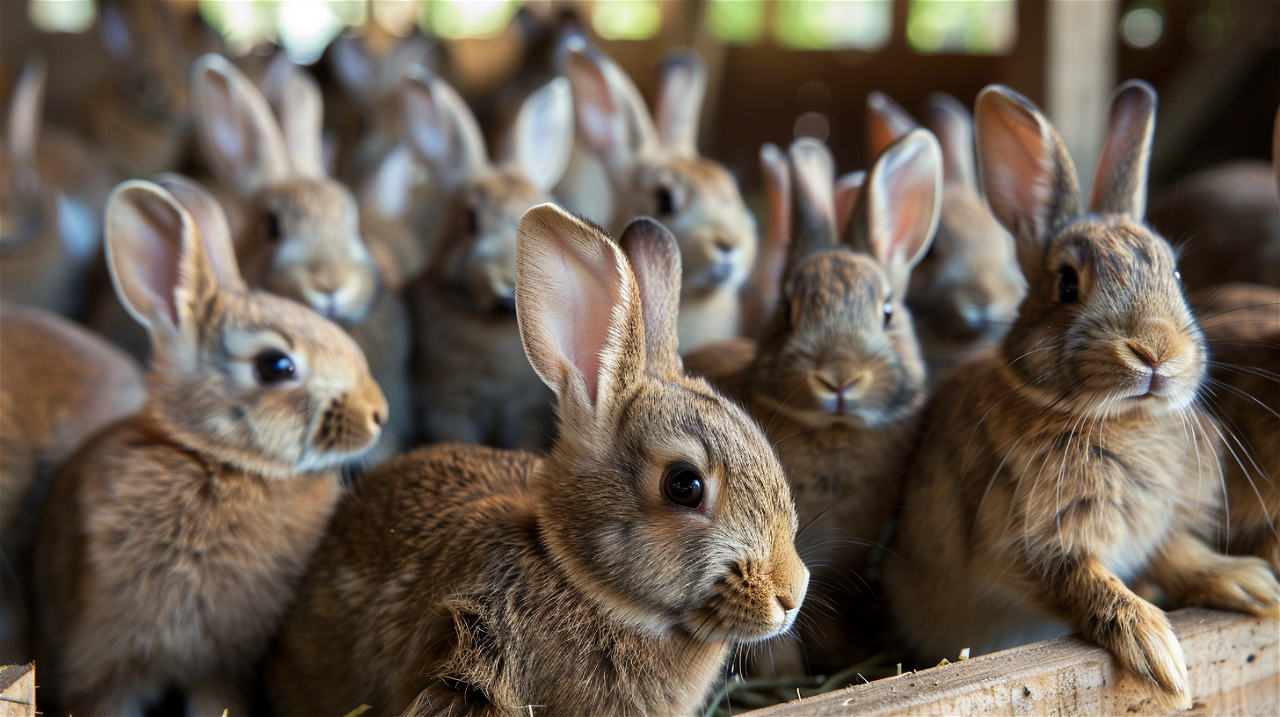
Rabbit farming can be a profitable venture for small-scale farmers and large agribusinesses alike, contributing significantly to food security and income generation. So, let us look at the sectoral trends.
The Process of Rabbit Farming
It begins with selecting suitable breeds, such as New Zealand Whites, Flemish Giants, and Californian rabbits, known for their meat quality and growth rates. The basic steps involved include:
Housing: Rabbits require clean, well-ventilated, and predator-proof housing. Hutches or cages made of durable materials with proper drainage and bedding are essential.
Feeding: A balanced diet of hay, fresh vegetables, commercial pellets, and clean water is crucial for healthy growth.
Breeding: Controlled breeding programs ensure high fertility rates and the production of healthy kits (baby rabbits).
Healthcare: Regular veterinary check-ups, vaccinations, and parasite control are necessary to prevent diseases.
Harvesting: Rabbits are typically ready for meat production within 12 weeks. Humane slaughtering practices ensure quality meat and animal welfare.
New Techniques in Rabbit Farming
In 2024, rabbit farming has seen several innovative techniques aimed at improving efficiency, sustainability, and animal welfare:
Smart Farming Technologies: IoT devices and sensors monitor temperature, humidity, and feed intake in real time, ensuring optimal living conditions and reducing manual labor.
Genetic Advancements: Selective breeding and genetic research have led to more disease-resistant and faster-growing rabbit breeds, enhancing productivity.
Sustainable Feed Solutions: Innovations in feed, such as insect-based protein and hydroponically grown fodder, provide cost-effective and environmentally friendly nutrition options.
Automated Systems: Automated feeding and watering systems streamline operations, reduce waste, and ensure consistent nutrition.
Waste Management: Advanced composting systems convert rabbit waste into high-quality organic fertilizer, promoting sustainable farming practices.
Tips for Successful Rabbit Farming
Embrace Technology: Utilize smart farming tools and automation to monitor and manage your rabbitry more efficiently. These technologies can help improve productivity and reduce labor costs significantly.
Focus on Health: Regular health checks and vaccinations are vital. Keep a close eye on your rabbits' health and respond promptly to any signs of illness to prevent outbreaks.
Implementation of Better Breeding Programs: Implement controlled breeding schedules to maintain genetic diversity and enhance the quality of your stock. Select breeds that thrive in your specific climate and conditions.
Sustainable Practices: Adopt sustainable feeding practices and efficient waste management systems to reduce your environmental footprint and improve farm sustainability.
Market Diversification: Explore various markets for your products, including meat, fur, wool, and even rabbit manure. Diversifying your income streams can enhance profitability and reduce risk.
Whether you are a seasoned farmer or a newcomer to cuniculture, staying informed about the latest trends and technologies will be key to increased profitability.
















